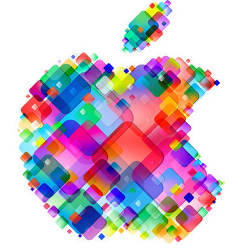
The history of invention is filled with tales of disruption and displacement. Motor vehicles replaced horses and blacksmiths, computer printers spawned desktop publishing, and digital cameras eliminated film and processing labs. In every instance, lives and jobs changed immeasurably as a result of a new way of doing things.
Yet, over the last few years, the pace of disruption has clearly accelerated. Not surprisingly, Apple, which unleashed the iPhone in 2008 and the iPod in 2010, has been at the leading edge of this new digital order. In only a few short years, its iOS devices have ripped through industries as diverse as retail and entertainment, publishing, and medicine.
The change has been nothing short of revolutionary. "The uses for these devices are somewhat limitless," says M. Eric Johnson, director of the Center for Digital Strategies at Dartmouth University’s Tuck School of Business. "We are seeing powerful, simple, and increasingly inexpensive solutions that use smartphones and tablets to replace far more complex and expensive proprietary systems."
Step into a restaurant or small shop, for example, and you’re increasingly likely to see this disintermediation served up before your eyes. iPods, iPhones, and iPads equipped with credit card readers are supplanting point of sale terminals that cost thousands of dollars. What’s more, these transactional processing systems — including Square and PayPal Here — provide analytics that were once beyond the reach of small businesses.
It turns out that 33 percent of retailers polled by the National Retail Federation said they plan to use a mobile POS device within 12 to 18 months, on top of the 17 percent in early 2012. Yet, the adoption of these tools not only delivers different hardware and software, it alters the customer experience and business processes. For example, it’s suddenly possible to assist customers anywhere in a shop, e-mail the receipts and, ultimately, reclaim display space while altering the physical layout of a store.
This tsunami of disruption extends far beyond merchants, however. High-end stereo systems have all but disappeared as consumers plug iPhones into docks or use wireless connections to stream music to speakers using AirPlay. Cameras, video recorders, and audio recorders are fading to black because of built-in phone capabilities or software apps available for phones and tablets. And sales of once-costly automobile navigation systems — and even less costly pocket GPS devices — are tumbling.
Nowhere are these changes more apparent than in the healthcare arena. "The availability of APIs for the iOS platform provides remarkable opportunities," says Danielle Levitas, group vice president of consumer technology at consulting firm IDC. "Sensors are opening up whole new worlds, including the monitoring of health and the aggregation of medical data."
Consider: Withings now offers a blood pressure monitor that plugs into an iPhone, tucks records away on an iOS app, and synchronizes data with personal health records. Another device, the IBGStar, tracks blood glucose levels via an iPhone. Meanwhile, researchers at the University of Washington, UW Medicine, and Seattle Children’s Hospital have jointly developed SpiroSmart, a digital spirometer that allows iPhone users to monitor their lung function by blowing into the device.
Remarkably, smartphones and tablets as the center of everything fits neatly into Steve Jobs’ vision of the computer as a digital hub. What the former Apple CEO didn’t live to see is an emerging post-PC world brimming with smartphones and tablets powerful enough to control an array of other systems and devices. iPhones and iPads are emerging as the brains for a modular computing model that marginalizes regular PCs and could make many household and industrial control systems obsolete.
In the end, this may serve as a double-edged digital sword. Society has already endured high unemployment rates and economic stagnation over the last decade. Economists consider the digital revolution a factor in these developments. "The reality is that just about anything that can be measured, monitored, or digitally consumed can be managed by a mobile device," Johnson concludes. "Entire industries must rethink their products and delivery systems to accommodate mobile digital technology."
Samuel Greengard is an author and journalist based in West Linn, Ore.



Join the Discussion (0)
Become a Member or Sign In to Post a Comment